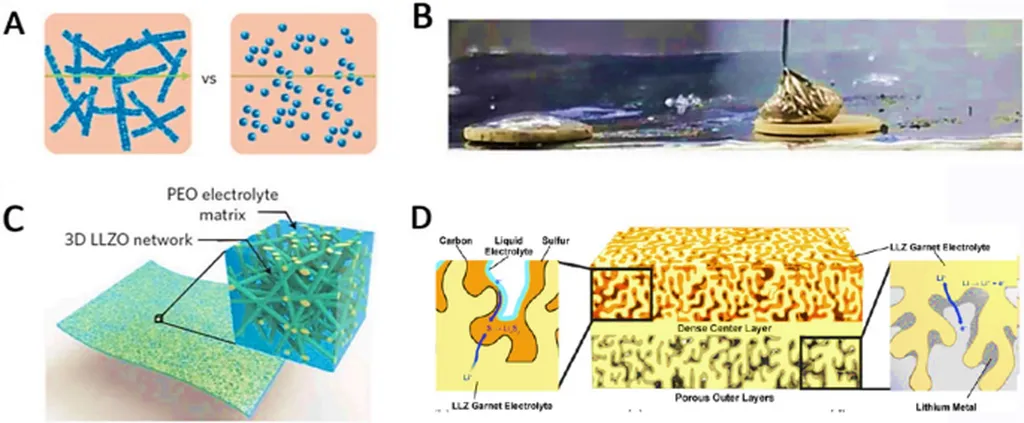In the quest for more efficient and cost-effective energy storage solutions, researchers have turned to an unlikely ally: a common mineral found in pegmatite deposits worldwide. A recent study published in the journal *Materials Research* (known in English as *Pesquisa em Materiais*) has revealed that spodumene, a low-cost natural mineral, can significantly enhance the electrical properties of a promising ceramic electrolyte material. This discovery could have profound implications for the energy sector, particularly in the development of solid-state batteries and other advanced energy storage technologies.
The research, led by Jie Chang, focuses on the use of spodumene as a sintering aid for lithium lanthanum niobate (Li0.25La0.25NbO3, or LLNO) ceramics. Sintering aids are materials added to ceramic powders to lower the sintering temperature and improve the densification process, ultimately enhancing the material’s properties. “The introduction of spodumene successfully acts as a sintering aid for LLNO ceramic solid electrolytes,” Chang explains, highlighting the mineral’s potential to revolutionize the field.
The study found that adding just 5% spodumene by weight to LLNO ceramics increased the material’s ionic conductivity by an order of magnitude compared to pure LLNO. This means that the enhanced material can conduct ions more efficiently, a critical factor for improving the performance of solid-state batteries. “LLNO with 5 wt.% spodumene sintered at 1000 °C presents an ionic conductivity of 4.96 × 10-5 S·cm–1 at 25 °C with an activation energy of 0.32 eV,” Chang notes, underscoring the material’s enhanced performance.
The implications of this research are far-reaching. Solid-state electrolytes are a key component in next-generation batteries, offering the potential for higher energy densities, improved safety, and longer lifespans compared to traditional liquid electrolytes. By using a low-cost, abundant mineral like spodumene, the cost of producing these advanced materials could be significantly reduced, making them more accessible for commercial applications.
Moreover, the study’s findings could pave the way for further innovations in the field of ceramic electrolytes. As Chang points out, “The results indicate that the introduction of spodumene successfully acts as a sintering aid for LLNO ceramic solid electrolytes.” This opens up new avenues for research into other natural minerals and their potential applications in energy storage technologies.
The research published in *Materials Research* not only highlights the potential of spodumene as a sintering aid but also underscores the importance of exploring natural materials for advanced technological applications. As the energy sector continues to evolve, such discoveries could play a crucial role in shaping the future of energy storage and delivery. With further research and development, spodumene-enhanced ceramics could become a cornerstone of next-generation energy technologies, driving innovation and sustainability in the energy sector.

